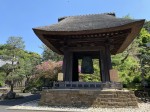
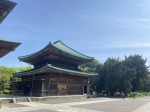
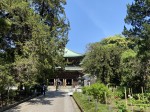
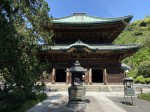
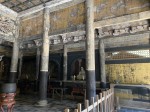
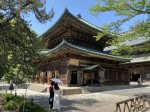
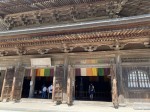
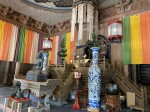
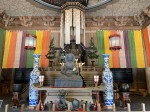
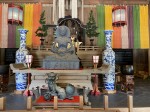
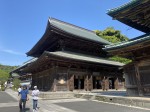
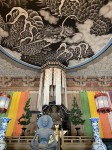
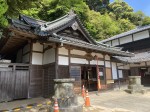
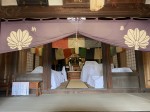
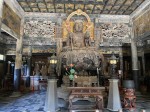
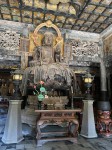
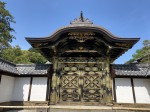

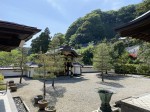
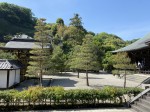
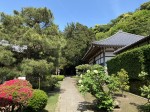
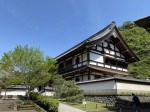
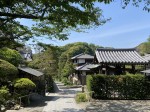
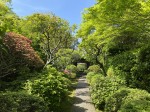
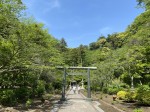
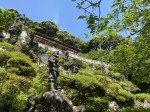
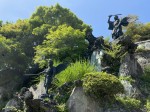
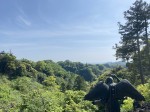

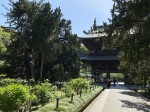
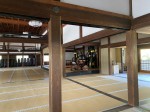
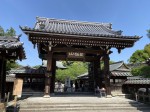
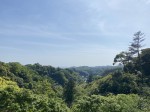
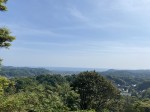
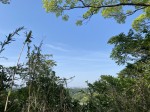
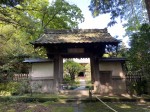
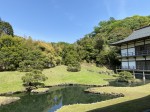
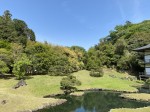
Kenchoji Temple - The Head Temple of the Kenchoji School of Rinzai Zen
History
Kenchoji is the head temple of the Kenchoji school of Rinzai Zen Buddhism with more than 400 branch temples in Japan and ranks first among the Five Great Zen Temples in Kamakura. The formal name is Kofukusan Kenchoji.
Founded in 1253 by Hojo Tokiyori (1227-1263), the fifth regent of the Kamakura shogunate, it was the first Zen temple in Japan.
The founding abbot was Rankei Doryu, a native of China where he was a disciple of the master Wuming Huixing, who came to Japan in 1246 at age 33 and taught in Kyushu and Kyoto before being invited by Tokiyori to Kamakura. He brought the pure, rigorous Zen practice of Sung dynasty China and made Kenchoji a national training monastery where numerous priests, more than a thousand at one point, learned the Chinese tradition. He recorded his essential teachings as Code of Conduct for Zen Priests, and the original in his hand, a National Treasure, is stored in the temple.
The horse that advances after seeing the shadow of the whip is not a good horse. The monk who waits for the teacher’s words and then takes action is not a good monk. – Code of Conduct for Zen Priests
Rankei Doryu was subsequently assigned to the Kenninji temple in Kyoto and to Tokoji and other temples in Kai province (now in Yamanashi), before being recalled to Kenchoji, where he died in 1278 at age 66. He was given posthumous name, Daigaku Zenji (Great Enlightened Zen Master), by Emperor Go-Uda, the first Zen priest to be so honored. The Kenchoji kitchen was the origin of kenchin-jiru, the soup of root vegetables and tofu that remains a fixture of Japanese cuisine.
Regent Hojo Tokiyori, the temple founder, was an advanced disciple of Rankei Doryu and the second abbot Gottan Funei and eventually became a priest himself, taking the name Kakuryo Bodosu. The most powerful national leader of his time, he provided ample support for Kenchoji and caused Zen teachings to be diffused throughout the nation.
Main features
In the original temple layout, modeled after Zen temples in Sung Dynasty China, there were seven main structures: Somon Gate, Sanmon Gate, Buddha Hall, Dharma Hall, and Hojo arrayed in a straight line, and a Meditation Hall and dining hall set to either side. Most of those original buildings were lost in fires during the 14th and 15th centuries. In the early 17th century, the Tokugawa shoguns, influenced by their counselors Takuan Soho and Ishin Suden who were illustrious Zen priests, began sponsoring the reconstruction of the Kenchoji, and strong support from the shogunate and other sources continued through the Edo period (1603-1868). Renovations leading up to the 750th anniversary of the founding in 2003 left the temple and grounds substantially as they appear today, and restoration of the Karamon Gate was completed in May 2011, completing the new Kenchoji.
Outer Gate (Somon)
Also called the Kofuku Gate. Built in 1783 at the Hanju Sanmaiin temple in Kyoto and relocated to Kenchoji in 1940. The plaque above the gateway contains the official temple name, Kofukusan, modeled on calligraphy by the tenth abbot Issan Ichinei.
Main Gate (Sanmon) – Important Cultural Property
A Sanmon (triple gate) is traditionally found in Zen temples and symbolizes three gates of spiritual liberation. This gate has images of 500 arhats (Buddhist saints) enshrined in the second story and passing beneath them is believed to purify the spirit. It was completed in 1775 thanks to contributions collected throughout the Kanto region by the 201st abbot Bansetsu Sekigi.
Buddha Hall (Important Cultural Property)
Many of the temple ceremonies are conducted in this hall, which enshrines the seated statue of Jizo Bosatsu that is the principal venerated image of this temple. It was relocated from Zojojo temple in Tokyo in 1647 and is also the mausoleum of Ogo (Buddhist name Sugen’in) who was the wife of the second Tokugawa shogun, Hidetada.
Great Juniper Trees
(Famous Trees of Kanagawa, Preserved Trees of Kamakura)
The seven ancient juniper trees on both sides of the main path were planted by the founding abbot Daikaku Zenji and over the centuries survived several great firs that extensively damaged the temple.
Temple Bell (National Treasure)
Cast in 1255 by Mononobe Shigemitsu, the famous bell has an inscription carved by the founding abbot Daikaku Zenji.
Hansobo Shrine
The tutelary Shinto shrine of the temple
Hojo
Also called the Ryuoden (hall of the dragon king). Enshrined here is a statue of Shakyamuni Buddha with a jeweled crown. The structure was relocated in 1940, together with the Outer Gate from the Hanju Sanmaiin temple in Kyoto where it had served as the main hall.
Garden (Scenic Historic Site)
Located behind the Hojo, the garden was originally constructed by the founding abbot Daikaku Zenji, centered on the Sanpeki Pond in a design symbolizing a Zen temple for the purpose of welcoming noble visitors. During the Edo period (1603-1868) an island was made in the middle of the pond with a connecting bridge and rocks and pine trees were placed around the pond, creating the present refined design that also utilizes the borrowed scenery of the Hansobo hill.
Dharma Hall (Hatto) – Important Cultural Property
The hall is designed with an altar to be used not for a Buddha statue but rather as a platform for the abbot to deliver sermons. Originally there was no Buddha image but now a statue of the Thousand-Armed Kannon is installed. Rebuilt in 1814, the hall is the largest wooden structure in the Kanto region. On the ceiling is an ink painting of a dragon and clouds by the modern painter Junsaku Koizumi.
Karamon (Grand Gate) – Important Cultural Property
The Chinese-style Karamon Gate serves as the main entrance to the Hojo and is also called Chokushimon or gate for imperial envoys. Originally the gate for the mausoleum of Sugen’in (now the Buddha Hall), it was relocated to Kenchoji in 1647 along with the Buddha Hall.
Temple Treasures – Cultural Property
Dragon and Clouds – Ink painting by Junsaku Koizumi
Placed on the ceiling of the Dharma Hall in 2003
Seated Image of Jizo Bodhisattva
Enshrined in the Buddha Hall
Wood, 15th century (Muromachi period), height 239,5 cm.
Painting of the Spiritual Founder, Rankei Doryu – National Treasure
Color painting on silk in the Southern Sung style, 1271
On view during the treasure airing.
Seated Statue of the Temple Founder, Hojo Tokiyori – important Cultural Property
Wood, 13th century (Kamakura period)
On view during the treasure airing.
Visiting the Temple
Training and Prayer
- A zazen meditation and Dharma talk can be arranged for a group of visitors.
- Shinto blessings for protection against misfortune, household safety or business success are offered at the Hansobo Shrine.
- Buddhist chanting is conducted at the Kofuku Shibu.
Red Stamps
- Stamps are available at the office of Jizo Bosatsu (the principal image of the temple), Shaka Nyorai, and for site 28 of the Kamakura Kannon pilgrimage and sites 9 and 10 of the Kamakura Jizo pilgrimage.
- Stamps for the Hansobo Daigongen and the site 11 of the Kamakura Jizo pilgrimage may be obtained by presenting the stamp book at the Hansobo Shrine.
Practice and Education
Open to all:
- Zazen Meditation: every Friday and Saturday at the Hojo, about 4:30 PM – 5:30 PM.
- Saturday Dharma Talk: weekly, 11 AM and 1 PM at the Sanmon Gate, lower level. The talk is about 15 minutes long (in Japanese).
- Saturday Story Time for Children and Parents: weekly, 10:00 AM – 11 AM. Tales and explanations professionally crafted for children’s comprehension (in Japanese).
Access
From JR Kita-Kamakura Station: 5 minutes by bus or 15 minutes walking.
From JR Kamakura Station: 10 minutes by bus or 30 minutes walking
8 Yamanouchi, Kamakura 247-8525
Temple regulations and Etiquette
- Temple admission fee
- Visitors entering from the hiking trail should go to the Outer Gate to pay the fee
- Please go first to the Jizo Bosatsu statue, the principal venerated image of the temple
- In the presence of remains of the dead, please bow and bring the hands together reverently
- Do not disturb flowers or other plants on the temple grounds
- Use of camera tripods and monopods is prohibited
- Smoking is prohibited on the temple grounds, except at one designated location near the rear
- Walk only on designated paths
Date: 2025-04-24
Author: Beti – A passionate traveler and lover of Asian cuisine, especially Thai and Japanese dishes, Bernadeta brings her culinary and cultural experiences to life in her writing. Beyond her travels, she’s an avid technology enthusiast with a deep interest in data processing, merging her love for exploration with analytical insights.
Photographer: Adalbert – An aficionado of computers and photography, Adalbert captures the essence of diverse cuisines with a discerning eye. A connoisseur of rich flavors and particularly fond of meat-based dishes, he combines his technical skills with his passion for the culinary arts in every shot.






